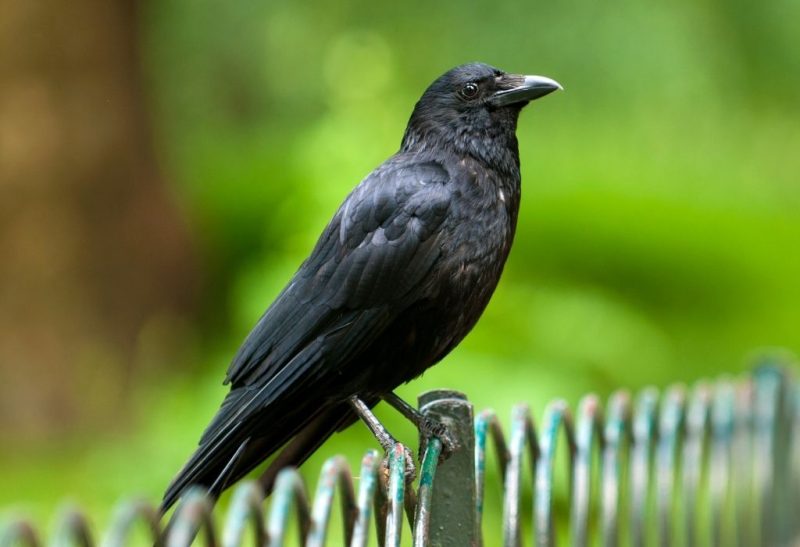Unlike dogs and cats that have been domesticated by humans for centuries, ravens are still categorized as wild animals up to these days. But some records show that ravens were kept as pets in the past. Thus, it gives hope to those who are interested in taking care of these creatures.
Do ravens make good pets? Unfortunately, ravens don’t make good pets because they get bored when contained in a cage. It’s almost impossible to give them freedom and feed their curiosity when they’re being locked in. They also demand a lot of care and attention.
Before indulging or taking initiative into taking care of ravens, it’s best that you know some things about them. In this article, pieces of information will be shown and they will help you decide whether you can take ravens as your pets or not.
Table of Contents
What Is a Raven? What Do They Look Like?
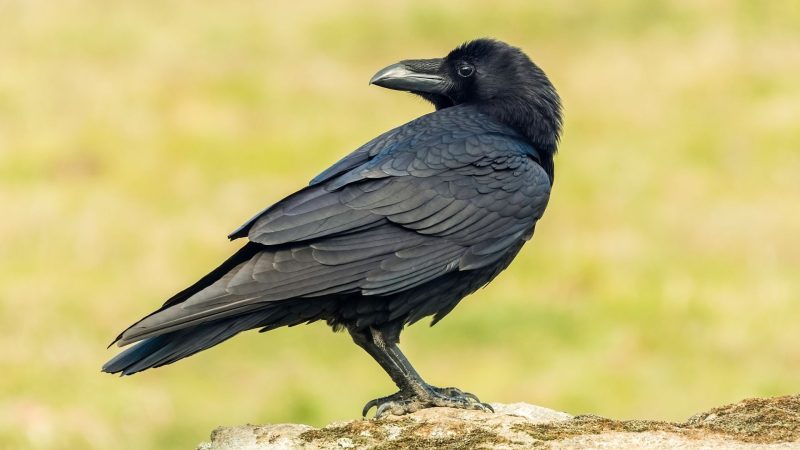
A raven belongs to the bird family called Corvidae. It’s a large, solid black bird with a wedge-shaped tail and distinct shaggy throat feathers or hackles. Just like other corvids, ravens have long bills and strong, large feet. You can identify their gender through size since females are smaller than males.
When you see ravens flying up high, you can mistakenly identify them as a hawk. But in terms of physical appearance, they resemble a crow. You can tell ravens apart from crows based on their more wedge-shaped tail, thick bill, and larger size.
What Is the Life Span of Ravens?
The lifespan of a raven that dwells in the wild is 10 to 15 years, while the captive ones can live for 40 years or more.
Is It Legal to Own a Raven?
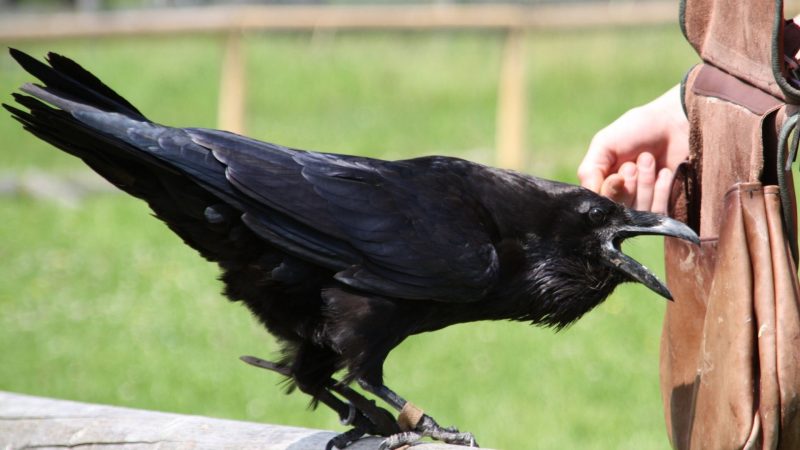
Under the Migratory Treaty Act of the US, no one can own a raven if the person doesn’t have a license as a wildlife rehabilitator. This applies among ravens as they are one of the migratory birds in North America that are protected from hunting. Even taking care of their offspring without permission from the authority subjects you to paying a fine.
You’ll be able to observe and take care of ravens if you join aviaries, bird sanctuaries, and rehabilitation. This is the only option that you can get near them but unfortunately, you can’t own one that is native to North America.
It’s possible to get a raven that comes from other countries like the South African ravens. But you need to put the effort into writing a letter that can convince the authorities to give you a permit in owning a raven. To obtain the document that you need, you have to lay out substantial reasons.
Can You Tame a Raven?
There are many records to prove the relationship of humans with ravens in the past. When Vietnam was under the French colony, they had semi-domesticated ravens or crows that looked after their master’s house when the latter was away.
Nenets who reside in the Northern Arctic of Russia relied on these birds as travel guides. They believe that these birds are particular with the terrain and people’s actions. However, it’s not common nowadays because of the low chance of owning a raven.
How to Attract Crows and Ravens to Your Garden?
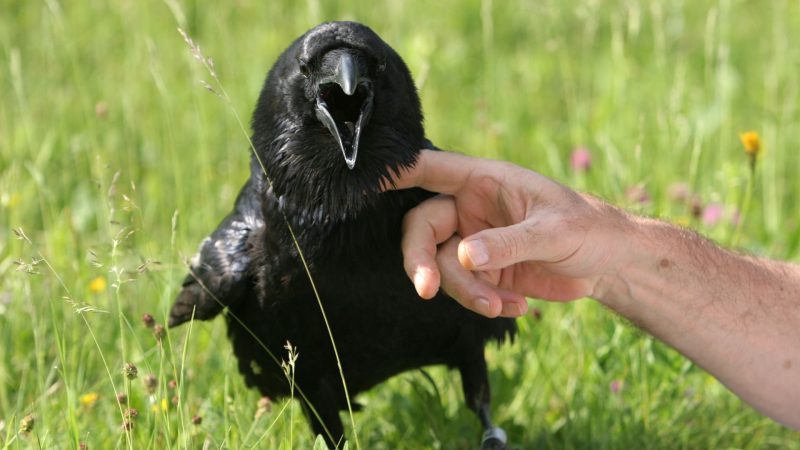
Below are the following factors on how to attract crows and raven to your garden:
The Garden Is Safe for Them
Ravens are smart enough to sense the danger posed by other animals such as cats and dogs. You should also avoid putting something that can create sound in your garden. Make sure that nothing will alarm these birds just like the presence of a wheelbarrow and garden sprinkler.
Trees Are a Safe Zone
These birds like to sit on trees that are safe. You can also put food on the branches so they will collect it and stay for a while.
Shiny Objects for Attraction
Shiny objects are attractive to ravens as they can reflect light or sunlight. Examples are coins and wind chimes. Once you have them, they will always be interested in visiting your place.
Display of Fake Raven
Ravens prefer to live with their kind so one way to attract them is by displaying a fake raven in your garden. It can trick them that it’s a safe place for every raven.
Offer Ravens Food in a Specified Time
Ravens, as scavengers, feast on whatever they can find. You can use your leftover food to attract them by putting it in your garden at a specified time like morning or evening.
Are Ravens Dangerous?

If ravens were born domesticated, they are not dangerous. But it may when it grew up in the wild before being taken to a house. Even though they are friendly during bonding time, they can still attack when feeling threatened. They don’t tend to bite humans but it can happen.
How Do Ravens and Crows Act as Pets?
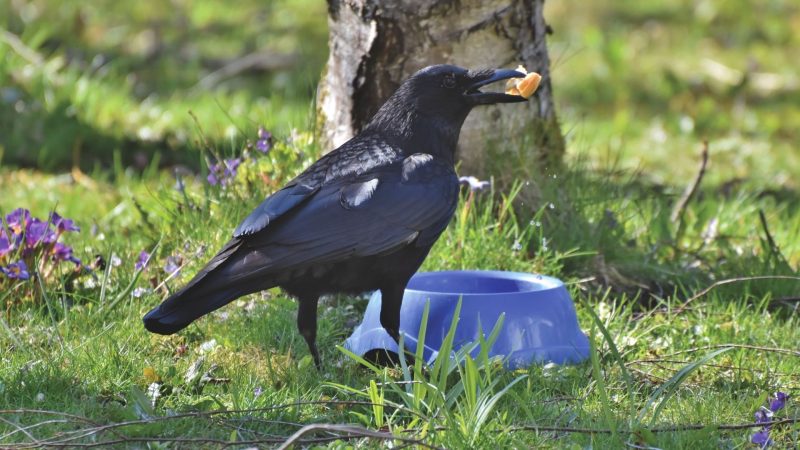
Since ravens are wild birds, they stay away from humans as a protective impulse. So, it may take some time to gain their trust. You will find it hard to give them meals for the first tries. When letting them loose indoors, they will create a mess due to their curiosity about the things around them.
Is It Possible to Keep Ravens in a Cage?
Ravens are not parrots or macaws that should be kept in a cage. They need more space to fly and hop. Corvids live well in an outdoor sanctuary or aviary that promises safety and security. If they are in a cage, they become bored with no proper mental stimulation.
Never clip their wings as it hinders their freedom to fly. You can put it in captivity but there must be ample space for the birds to spread their wings. To let them live healthily, they should be placed in an outdoor aviary.
Are Ravens Intelligent?
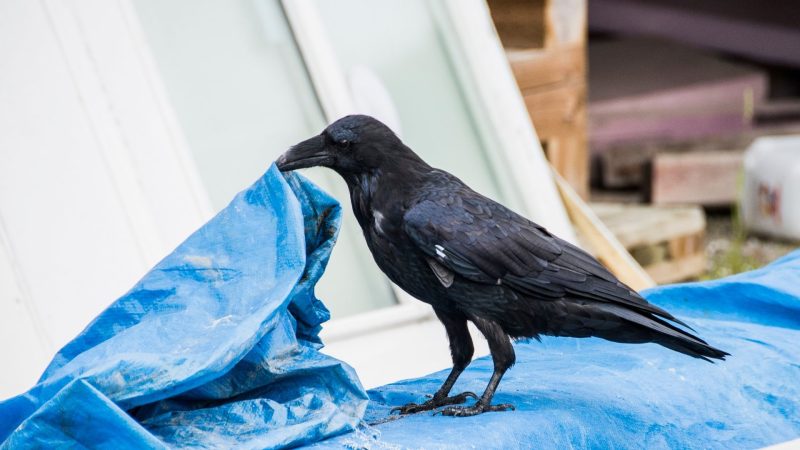
In a book entitled ‘Gifts of the Crows’ written by wildlife experts namely Tony Angell and John Marzluff, ravens have human characteristics such as language, deceit, murder, play, self-recognition, revenge, insight, and more.
Furthermore, a study confirms that ravens have advanced intelligence. They can roughly remember the dimensions of mental templates and make these things from scratch. Moreover, they’re not only copycats but precise in identifying designs. These templates let them recognize useful objects. This ability is similar to human actions when passing information that’s used to build something.
There are tons of studies about ravens. One of the discoveries showed that they can identify different human faces. Also, they can distinguish humans from other birds. For the sake of survival, they can also distinguish the edibles and inedibles. They can even do tricks when hunting to have an advantage over the food. However, the findings show that ravens can’t consciously contemplate options and pick the best.
What Are the Eating Habits of Ravens?
Ravens are primarily omnivorous as they consume small mammals, amphibians, other birds, insects, reptiles, and plants. They like to feast on carrion as well as the afterbirth of ewes and other huge mammals. Moreover, they also eat vegetables, fruits, buds, grains, and acorns. Below are some of their eating habits:
- With varieties of food eaten by ravens, researchers found that mammal flesh, specifically in the form of carrion, is the vital food source of these birds. So, you can see them scavenge on dead animals and even on the garbage.
- Storing food is a part of ravens’ eating habits. They store various types of food such as meat, eggs, bones, and nuts. By the time ravens leave their nests, they start learning how to store food.
- They leave the roost site and travel as far as 40 miles every day to reach daytime feeding areas. While feeding, safety is still their concern so they post sentries when there’s existing danger. When ravens gather nuts or seashells, they drop them on the street so the car that passes by breaks it open for them.
Is It Necessary to Wash Pet Ravens?
Ravens do wash. You can leave a container that is not too deep and filled with water for a pet raven. The adults can wash themselves. Just be mindful to change the water daily.
Is It Safe to Have Ravens as Pets When You Have Small Children in the Household?
It’s not safe to have a pet raven in your house if there are small children. The little ones can poke or grab it. They’re not as playful as dogs but rather territorial. Ravens will use their beaks to defend themselves when children disturb them.
How Much Is a Pet Raven?
The chance to own a pet raven is buying one that is not native to North America. It’s best to contact reputable breeders as the price can start at $200 up to $6,000. Apart from preparing for the payment, there should be enough space for their improvised shelter as the usual cage is not ideal habitat.
How to Get a Raven Permit?
Securing a special raven permit requires a lot of effort. You have to present a legitimate reason for the approval of the authority. The application should be submitted to a nature reserve center, wildlife rehabilitation, or other centers that focus on bird care.
Summary
At this point, you know the hardship and struggle that are brought by owning a raven. You still need to get a special permit despite getting one that is not native to North America. The points mentioned in this article show that it’s challenging to keep a wild animal in a house.
List of Sources
The Intelligent Crow: Exploring Human-Animal Relationships Cross-Culturally. Yale University.
Link, R. (2005). Living With Wildlife: Crows. Washington Department of Fish and Wildlife.
Peebles, L., Spencer, Jr., J. (2020). Common Ravens. U.S. Department of Agriculture.
Common Raven. University of Michigan.
